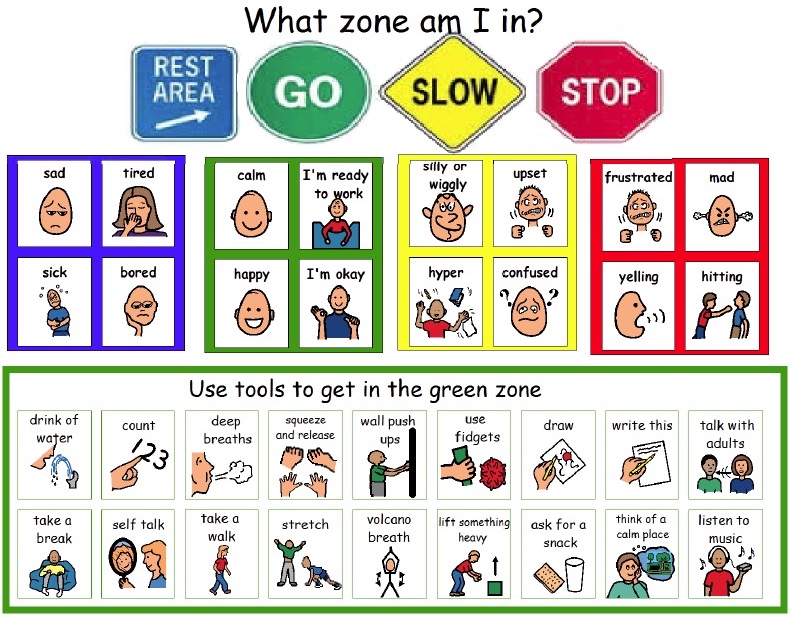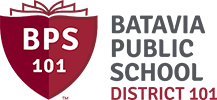Staff Spotlight: Kelly Zabran
by Anissa Garcia, Batavia High School junior/BPS101 Communications Dept. intern

Kelly Zabran, special education teacher, Hoover-Wood Elementary School
Kelly Zabran, a native of Geneva, Ill., is a special education teacher at Hoover-Wood Elementary School. Miss Zabran is part of the BPS101’s Developing Opportunities Program. She received a bachelor’s degree in special education from Illinois State University and a master’s degree in reading. To help the BPS101 community better understand the District’s DO program, Miss Zabran took time out to answer several questions about it from her classroom perspective.
What is the Developing Opportunities program?
It is an instructional program for students whose primary needs are emotional or behavioral. The students have social-emotional challenges that interfere with their academics, relationships with others, and/or behaviors. The program is for students who need a highly structured classroom with positive behavioral supports. Students receive explicit instruction in social skills as well as core academics. All students are able to benefit from opportunities for integration into the general education setting. The DO classroom is the students’ ‘safe spot’ and students are able to take breaks away from the large-group setting when they are feeling overwhelmed, angry, frustrated, etc. The focus of the program is to help students with their social behaviors in order to help them feel more successful in the general education setting.
How does this classroom differ from that of a ‘regular’ classroom?
This is a multi-age classroom. My students are in kindergarten, first, and second grade from Batavia’s elementary schools. The students are learning how to cope with their emotions and keep their bodies safe. The classroom runs on visual schedules, timers, and lots of positive reinforcement! We currently have 12 students and three paraprofessionals in our classroom. The students also have “choice times” built into their day, which we like to call ‘ketchup’ and ‘pickle’ time. If the students complete all their work and show expected behaviors, the students get to be on ‘pickle’ and pick something fun to do. If the students do not complete their work or show unexpected behaviors, then they are on ‘ketchup’ and need to catch up on their work before earning their choice time.
What determines a student’s eligibility to be enrolled in this program?
There are different factors to consider before a child may be enrolled in the DO program. For example, a child must be eligible for special education services with a primary focus on supporting social/emotional challenges. The child’s social, emotional, and behavioral needs significantly impede their educational performance in the general education environment. A child may also benefit from the therapeutic environment if the interventions and/or the behavior plan for the child was not successful at their home school. We also have a lot of move-in students who were in a more restrictive environment in their old school district.
In what way(s) is the education more beneficial for students who qualify?
With the multi-age classroom, students are able to have peers to look up to or be that positive role model for the younger students. Students are given the extra supports they need to feel successful in school. The Kindergarteners are also able to attend the DO program full day. The classroom is very structured and each student knows his or her expectations. Learning is personalized to each student, and students often work in small groups. Some of the students are in the classroom for more than one year and build stronger relationships with their peers and teachers. Each student also has his or her own ‘social story,’ which is read at the start of the day. These stories help the students start their day in a positive way. Overall, the students are able to get more positive reinforcement throughout their days with frequent check-ins and adult support when processing their feelings.
How is success and growth measured?
Each student has a point sheet that they fill out after each activity that monitors completion of work, use of calming tools, and ability to follow directions. Students are able to self-monitor and do check-ins with an adult, as needed. When students are consistently meeting their point goals, they are ready to go into the general education classrooms for academic time. If a student’s strength is math, then math will be the child’s first class to push into. If the student is successful in the general education classroom, then we start to look for more ways to add general education time to the student’s schedule. We have students in the DO program who have learned the tools to manage their emotions and behaviors, and have been able to fully push out into the general education classroom again. The goal is to change behaviors and to provide the students with the tools to help them gain independence.
What techniques or methods are being used to teach students in this program?
The DO program has a daily social group that the classroom social worker often facilitates Some students also have individual social work minutes with the social worker.  The students are taught the ‘Zones of Regulation,’ which helps them identify what zone they are in at the moment and how to control their emotions. Students also get a lot of ‘in-the-moment’ support when they are experiencing a strong emotion. Students are taught how to take a break when their bodies need it. They have a special ‘chill zone’ spot in the classroom and many of their general education classrooms have one now, too!
The students are taught the ‘Zones of Regulation,’ which helps them identify what zone they are in at the moment and how to control their emotions. Students also get a lot of ‘in-the-moment’ support when they are experiencing a strong emotion. Students are taught how to take a break when their bodies need it. They have a special ‘chill zone’ spot in the classroom and many of their general education classrooms have one now, too!
Students can step away from what is bothering them and practice using their tools (e.g., deep belly breathing, counting to 10, drawing, etc.). After students have taken a break, they are able to talk to an adult and problem solve. Here’s a photo of our chill zone:




